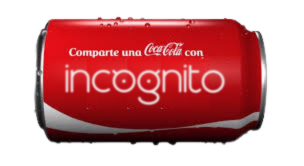Emotional marketing is a strategy that seeks to generate a deep emotional connection between a brand and its consumers. It is based on the idea that purchasing decisions are largely influenced by emotions.
For example, rather than simply highlighting a product’s features, emotional marketing focuses on how that product or service can satisfy consumers’ emotional needs.
Emotional marketing has become a fundamental tool for companies. Beyond simply promoting products or services, it’s about connecting with consumers on an emotional level.
What is it for?
It serves several key purposes:
Generate customer loyalty:
It fosters customer loyalty by creating an emotional bond that goes beyond simply satisfying a need.
Differentiation from the competition:
It allows a company to stand out in a saturated market by establishing a unique emotional connection with consumers.
Increase brand recall:
Emotional experiences tend to be more memorable, which can increase brand recognition.
Drive sales:
Emotions can be a powerful driver of purchasing decisions.
Content
Why is it important to use emotional marketing in a company?
The importance of emotional marketing lies in its ability to create solid relationships with customers.
When consumers feel emotionally connected to a brand, they are more likely to be loyal and recommend it to others.
In addition, emotions can drive impulse buying decisions and motivate customers to pay a premium price for a product or service that makes them feel something special.
Differences between emotional and experiential sensory marketing
Emotional sensory marketing:
This approach is based on the stimulation of the senses to evoke emotions. It uses elements such as sound, scent, texture and color to influence the emotional perception of a brand.
For example, a luxury retailer may use exclusive fragrances to create a unique sensory experience.
Experiential marketing:
It focuses on creating meaningful experiences that generate positive emotions. This may include live events, interactive activities or emotionally charged content.
For example, a car brand could organize test drives at exciting events to create a connection with its customers.
The three Cs of emotional marketing
Emotional marketing is about connecting with consumers on a deep level, evoking emotions that influence their purchasing decisions and loyalty. To achieve this, consider three key elements:
The Power of Color
Color is a powerful tool in emotional marketing, as it can evoke emotions and feelings instantly. Each color has specific emotional associations:
Red: Passion and emotion, creates urgency.

Blue: Confidence and calm, establishes credibility.

Green: Nature and freshness, associated with sustainable products.

Yellow: Joy and optimism, generates positive experiences.

Black: Elegance and exclusivity, used in luxury brands.

Careful color choice can influence the emotional state of the audience and how they perceive the brand.
The Importance of Content
The content of an emotional marketing campaign is essential to convey the desired message and connect with the audience. Here are some key considerations:
Emotional stories: Personal stories or customer testimonials can generate empathy and create emotional connections.
Visual and audiovisual content: Images and videos have an immediate impact on emotions.
Shared values: Content that reflects the values and beliefs of the audience can create a deep emotional connection.
Interactive content: Campaigns that engage the audience, such as contests, polls or social media challenges, can generate positive emotions and encourage participation.
Brand Behavior
Brand behavior itself is a crucial element in emotional marketing. Authenticity and consistency are essential. Here are some guidelines to follow:
Authenticity: Authenticity is key to building trust and loyalty. Brands must be honest and consistent with their values and promises.
Social commitment: Brands that show a genuine commitment to social or environmental issues can generate positive emotions.
Cultural sensitivity: It is important to understand and respect cultural sensitivities. What may be emotionally effective in one culture may not be effective in another.
Constant communication: Maintaining constant communication with the audience through social networks, blogs and other channels can help strengthen the emotional relationship with customers.
How to calculate the effectiveness of emotional marketing?
Measuring the effectiveness of emotional marketing can be challenging, as it deals with subjective emotions and connections. However, here are some metrics and methods that can help:
-
- Customer surveys and feedback: Collect opinions and feedback from customers to assess how they feel emotionally about your brand and products.
-
- Loyalty and retention tracking: Monitoring customer loyalty over time can indicate whether your emotional marketing strategy is working.
-
- Social media analytics: Examine social media interactions, such as Likes, comments and shares, to measure emotional engagement.
-
- Sales and profitability analysis: Compare sales before and after the implementation of emotional marketing strategies to assess their impact on financial performance.
Examples of Emotional Marketing with real impact
Coca-Cola: "Share a Coke".
Coca-Cola carried out the “Share a Coke” campaign in which it personalized 550 million bottles with the 122 most common names in Spain.

This emotional strategy resulted in an impressive 13% increase in sales during the 5-week campaign.
Consumers felt emotionally connected to seeing their own names on the bottles, which not only drove sales, but also created a deeper relationship with the brand.
Dove: "Because you are beautiful just the way you are".
Dove launched the “Because you are beautiful just the way you are” campaign, which promoted self-esteem and confidence. This strategy generated a positive emotional response among consumers and resulted in a significant increase in customer loyalty.
The campaign not only touched people’s emotions, but also demonstrated that Dove cares about the well-being and self-esteem of its consumers.
Nike: "Just Do It"
Nike has maintained its “Just Do It” motto since 1987, focusing on self-improvement and determination.

This strategy evokes emotions of motivation and success, which has consistently driven their sales over time.
Consumers are inspired by Nike’s emotional message, which motivates them to take action and choose Nike products that represent this philosophy of life.
Barbie: "Be what you want to be"
In the campaign “Be what you want to be,” Barbie tapped into girls’ aspirations to grow up and become adults by offering products that allow them to feel part of the world that fascinates them so much.
She sold millions of dolls that represented those jobs and dreams, inspiring them to imagine and pursue a future full of possibilities.

This campaign not only boosted Barbie doll sales, but also stimulated children’s imagination and ambition and has remained their motto ever since.
Emotional marketing is a powerful strategy for companies that want to connect deeply with their customers and build long-term loyalty.
Its effectiveness can be measured through various metrics, and its importance lies in its ability to differentiate a brand, drive sales and create memorable experiences.
Combined with sensory and experiential approaches, emotional marketing can elevate a brand to the next level and leave a lasting impression in the minds of consumers.












